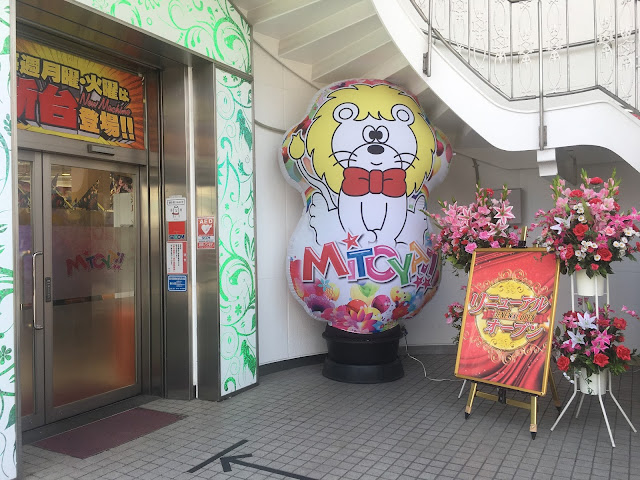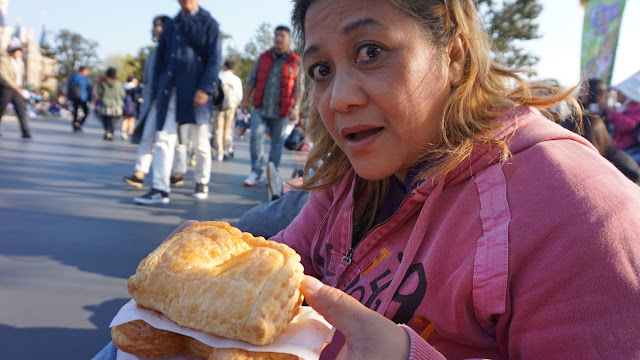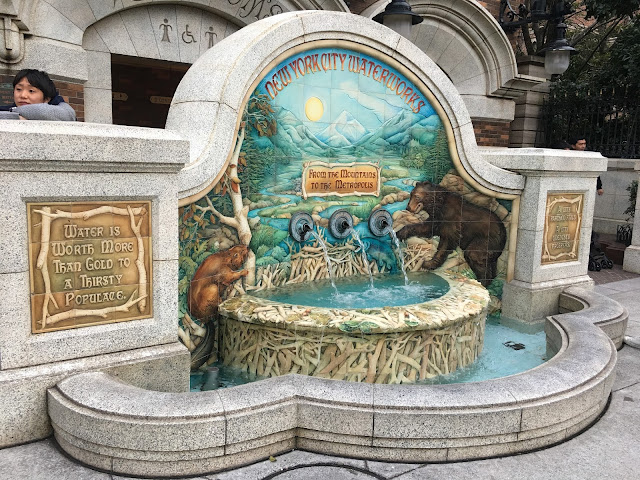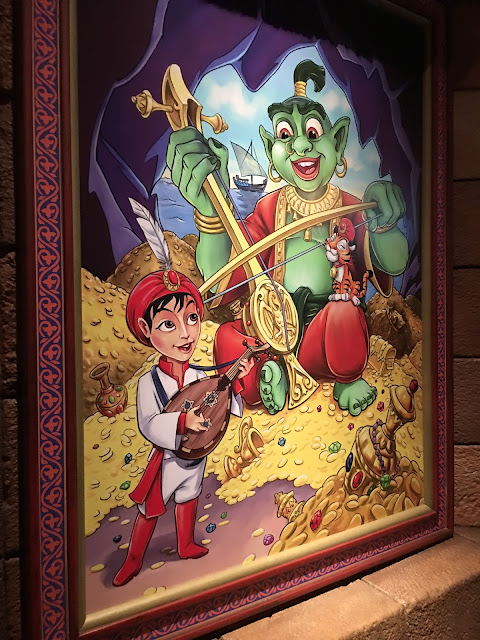The 7 Things That I Miss the Most About Japan
Delicious takoyaki (octopus balls) from a food stall in Ueno Park.
As of the time of writing, it's been five months since my family and I concluded our twelve-day vacation in Tokyo, Japan, but the euphoria from having explored our ultimate dream destination did not decrease the slightest. It's all we ever talk about at home. We made a slideshow out of the 3, 600+ pictures and 10+ videos that we shot in Japan which my mom fondly plays everyday; and sometimes, we find ourselves daydreaming about the most surreal twelve days of our lives so far.
With my heart continuing to yearn for the Land of the Rising Sun, I've listed the top seven things from that country that I miss the most.
Optional: Jump to:
Page 2: Japanese food and street fare, Japanese food markets called depachikas, and the extensive and exceptionally-efficient railway transportation system.
7. THE CHERRY BLOSSOMS
An everlasting icon of Japan, the cherry blossom is one of the main drawing points why tourists flock to the country during the spring. The symbol for Japan's National Police force is also the country's national tree and national flower. The beautiful pinkness of the blossoms has a quality in them that is soothing and relaxing to the eyes especially when you look at them in droves.
Since my family and I visited Tokyo during the month of April, we were fortunate enough to witness the beauty of the cherry blossoms while they were in peak bloom condition and at their most photogenic. It was a most opportune time when the flowers were "ripe" enough to fall to the ground and inadvertently create carpets of pink in the pavements. There were lots of rare instances, too, wherein we caught ourselves in the middle of a "sakura rain" as the falling petals danced in the breeze and showered passers-by.
Popular cherry-viewing spots around Tokyo that we visited are: Ueno Park, Shinobazu Park, Rikugien Gardens, Yanaka Cemetery, Yoyogi Park, and the Meguro River Walkway.
Cherry blossoms near a shrine in Keisei-Ueno.
(Related post: Cherry blossoms, tulips, peonies, and other flora in Rikugien and Kyu-Furukawa Gardens!)
A tree bearing vibrant pink blossoms in Ueno Park is popular among tourists.
Cherry blossoms along the banks of the Shinobazu River.
Picknickers near Shinobazu Pond.
Cherry blossom trees in Zojoji Temple Park.
Rows of somei yoshino trees line the Meguro River Walkway.
Beautiful even at night!
(Related post: Love Japan's culture of anime? Then this theme park's for you!)
(Related post: The ultimate must-visit theme park for the kawaii-lover!)
6. THIS CUTE LITTLE APARTMENT THAT SERVED AS OUR HOME FOR OVER TWELVE DAYS IN TOKYO
During the planning phase of any trip, the main issue during budget-allocation that tends to scare off most potential travelers is the cost of the accommodation. My party was composed of four adults and one three-year old, so we fared no better when it came to finding a suitable yet budget-friendly accommodation. We desperately looked for a hotel room or an entire apartment that could possibly accommodate a group our size in one single room while costing less than a hundred bucks a night. The unexpected answer to our prayers came through Airbnb.
We ended up booking an entire apartment owned by a kindly Japanese woman named Sakura, who is a very hospitable and gracious host, open to all of our queries even before we booked her place. She even gave me a little bit of insight about the Japanese people and culture which I inputted on my blog post about a beautiful cemetery and how the Japanese see death. Even though I only personally met her just once, I felt that she had the same core attitudes that I saw in most of the locals that I encountered throughout Tokyo-- kind, helpful, and soft-spoken.
And so, arriving at Narita International Airport on the evening of April 2, we took a taxi to Arakawa where Sakura-san's apartment was waiting for us. It is located on the fifth floor of a building that has a narrow set of stairs with no elevators. Sakura-san was not there to personally greet us; instead, latched around the front door's knob was a black storage box that must be unlocked with a code to obtain the house key inside.
(Related post: Kawaii food theme park in Japan!)
Sakura-san's apartment is on this building. There are a couple of drink vending machines and a ramen restaurant on the ground level, and an unagi (freshwater eel) restaurant on the second floor.
Like locals, we had to take our shoes off at the entrance and change into house slippers-- and it was no easy feat, since there were five of us and the foyer only had space for one person! Every part of the apartment was so cramped that it was impossible for five of us to move around all at the same time-- but rather than be annoyed, we felt rather in love with the place. We did our research before coming to Japan and found out that Japanese apartments are really cramped in nature because the Japanese are big on space utilization, to the point where most apartments' tatami rooms serve as the sitting room, dining room, and bedroom, transformed by the tenant as he/she sees fit!
It was also apparent when we first stepped inside the apartment the Japanese are very keen about the cleanliness of their homes. Everything was spic and span!
Our apartment's lovely six-tatami room. It can be a sitting room and dining room, and in the evening, we set aside the table and cushions to lay out our futons for bedtime.
Our balcony. You can see the washing machine that we used to wash and spin our clothes.
The bedroom, good for two persons.
And since strict segregation of wastes is being implemented country-wide, our little kitchenette came with three trash bins-- one for plastic wastes, one for cans, and one for domestic trash like paper and food.
Our kitchenette. Sakura's came fully-furnished with an electric stove, bread toaster, water heater, a lightweight coffee table, microwave, refrigerator, and cooking and eating utensils.
China teacups and a small clay teapot. Sakura-san even provided us with coffee and tea bags for our use during the entire duration of our stay.
This little old Japanese-style bathroom is so cute! The old-school water heater and the small crouch-down tub is something my three-year old and I sorely miss! To learn how to use the old-style water heater, watch this video. Don't forget to turn the gas on first, though!
Being a handwashing-freak myself, I love how there's a sink for handwashing in the hallway near the entrance!
One of the things that I love about Sakura-san's apartment is its location. Considering that the apartment is located a couple of meters away from convenience stores, supermarkets, drugstores, restaurants, and the multi-train station Nippori and Mikawashima, the price comes dirt-cheap.
A baseball and children's park a stone's throw away from the flat.
A train slows to a stop at Mikawashima Station, a two-minute walk away from the flat.
You can see our apartment building from the train waiting area.
Popular convenience store brand 7-11 and Kitchen Origin, a chain store selling boxed set meals, are both a two- to three-minute walk away from the apartment.
Sukiya, a budget family restaurant chain, is one of our favorite go-to places for dinner. It is right next to 7-11.
Maruetsu, a popular supermarket brand, is a five-minute walk away from the apartment. We came here almost every night at 7:00, when stores all over Japan start to mark down the prices of their bentos up to 70% the original price!
A local grocery store a few meters away.
One of the niftiest things about our apartment's location is the mini-square located in front of the building where our three-year old sweetheart used to play. The sidewalk lined with cherry blossom trees made our walks to Mikawashima Station very pleasant indeed.
The square at night.
On days when our itinerary required us to take a JR Line Train, we walk westward to Nippori Station which is ten minutes from the apartment by foot. The establishments in the area around Nippori are more posh and upscale than the ones near Mikawashima owing to the fact that Nippori is a station where multiple train lines can be located.
There are many beautiful things to see (and so many fascinating shops to ogle at) walking on the way to Nippori.
A household items store in an alley between Mikawashima and Nippori.
Noodle shops and restaurants.
A sakura tree stands proudly in the center of a crossing in Nippori.
A five-minute northward walk from our apartment is Shin-Mikawashima Station, another multi-train station. The neighborhood here is a lot quieter, more deserted than both the areas around Mikawashima and Nippori.
A deserted alleyway to Shin-Mikawashima, where the number of vending machines that we occasionally saw clearly outnumbered the number of people that we encountered.
Beautiful pink peonies in full bloom!
A hairstylist's shop.
Beautiful blooms on display in front of a residence in an alley near Shin-Mikawashima.
An izakaya.
A pachinko parlor.
Our stay in Sakura-san's apartment was very pleasant, comfortable, and convenient. However, that is not to say that it was all perfect. For one, we were kind of disappointed about the electric stove as it did not heat well so we totally were not able to use it. Also, some small Japanese apartments such as this one have a minimum threshold for total electricity usage at a time which if surpassed will automatically trip the breaker-- meaning, we had to refrain ourselves from using too many appliances at one time. All in all, though, we had a very pleasant and fuss-free stay and I would not hesitate to recommend this apartment for groups of 3-5 wanting to visit Tokyo.
How to get to the apartment: If you're coming from Narita Airport (like us), take the Skyliner express (36 minutes, 2400+ yen) and get off at Nippori, ride the Joban train bound for Tsuchiura/ Toride and get off at Mikawashima (one stop).
To sign up for Airbnb and get $22.00 off on your first trip, click here.
To book Sakura-san's apartment, click here.
5. VENDING MACHINES EVERYWHERE!
(Related post: Experience Japanese culture at its finest by trying out a Japanese onsen/ hot spring soak!)
There came a lot of times in my life when I craved for a bottle of Coke Zero in the middle of the night to go with my Harvest Moon marathon gaming. It's quite a chore to have to hoard a stash of my favorite sugar-free soda inside the kitchen cabinets under the sink just to meet my late-night cravings for acid, but during my trip to Japan I was thrilled to find out that there was a soda-vending machine conveniently located on the street right next to our building! My Coke Zero was always within reach provided that I endure the cold and biting outdoor temperature and succeed in the torturous task of having to climb down (and up) five floors.
These vending machines dispense not just Coca-Cola but a variety of other chilled and warm drinks. I grew rather fond of the white vendo's warm corn soup in a can (1.99 JPY) and chilled grape-flavored Fanta (1.00 JPY).
Tip: It was chilly when we visited Japan in the spring so we developed the habit of buying hot cans of drink from the nearest vendos whenever we head out; they make a good hot compress for icy hands.
It is rather unsurprising that Japan, the land famed for advanced robotics technology and automated industry, has a fascination for vending machines. For one thing, they are very convenient especially since the Japanese are always busy and on-the-go. There are vending machines on practically every corner in Japan especially where crowds are usually formed such as streets, parks, and train stations.
Beverage vending machine. Utterly practical and convenient.
(Image from this pin.)
Selections from a beverage-vending machine in Mikawashima Station. The drinks labeled with a blue tag are chilled ones, while those labeled with a red tag are warm/ hot.
The funny thing about Japanese vending machines (or vendos as they are affectionately called there) is that virtually anything can be purchased from them, not just food and drink, making them either delightful or weird.
A row of gachapon (little toys/figurines that come in a plastic capsule) vending machines in Akihabara.
A chocolate vending machine.
Ice cream vending machine.
(Image from this link.)
Energy drink vending machine right next to a condom vending machine
(Image from this link.)
Egg vending machines: a first from Japan!
(Image from this link.)
A vendo that dispenses used women's panties-- right next to a sex toy vending machine. *insert shocked emoji here*
(Image from this link.)
Flying fish juice vending machine. Each bottle contains a grilled flying fish and some algae (source: A Geek in Japan) used as a soup base for some recipes. Couldn't this product come in a can?
(Image from this link.)
Vendos in the Philippines are a handful to none. If these machines were placed strategically in the Philippines as they were in Japan, the chances of them getting vandalized or looted in no time are extremely high. Also, heavy floods during the monsoon season will likely deal damage to the machines' electrical circuitry, and the intense heat of the sun during the dry days will help wear out their sleek metal exterior. But then again, as the old adage goes, "Where there's a will, there will always be a way."
4. DISNEYLAND AND DISNEYSEA
Like typical tourists to Japan, we set aside two days in our itinerary exclusively for Tokyo Disneyland and Disneysea-- a decision which, I swear, was in no way influenced by the fact that we were traveling with a three-year old Disney lover.
We purchased a Two-day Magical Passport in person at the park's ticket booth on the exact same day of our planned visit, which was a pain because at 10:00 AM, the line for entering the park was incredibly long. In our defense, we did try to obtain our tickets online but the website declined our credit card because apparently, they only accept cards issued by countries outside Japan if they're enrolled with 3-D Secure.
We chose to spend our first magical day in Disneyland. With over seven different themed areas and around 38 or so attractions, there're bound to be no dull moments.
Your passport to the most Magical Place on Earth!
The Trading Post at Westernland.
A pilgrim wagon in Westernland.
Westernland.
Tom Sawyer's Island Rafts at Westernland.
Mark Twain's Riverboat at Westernland.
A map of Camp Woodchuck.
At Camp Woodchuck.
At Camp Woodchuck.
Adventureland.
The Swiss Family Treehouse in Adventureland.
The Swiss Family Treehouse in Adventureland.
The Swiss Family Treehouse in Adventureland.
The Swiss Family Treehouse in Adventureland.
The Swiss Family Treehouse in Adventureland.
The Swiss Family Treehouse in Adventureland.
The Swiss Family Treehouse in Adventureland.
Lunchtime! Cheeburg-steak and rice from Café Orléans in Adventureland.
Ebi Tempura with rice from Café Orléans in Adventureland.
Strawberry tart from Café Orléans in Adventureland.
Critter Country.
One of Disneyland's most famous attractions: Splash Mountain.
Snow White's Adventures: a dark ride in Fantasyland.
The Queen of Hearts Banquet Hall in Fantasyland.
It's A Small World in Fantasyland.
Alice's Tea Party in Fantasyland.
Pooh's Hunny Hunt in Fantasyland.
Toontown: the looniest and most colorful themed area in Disneyland.
A bronze fountain in the center of Toontown.
A (not-so-effective) Goofy scarecrow in Toontown.
Kids' play area near Goofy's Paint 'n Play House in Toontown.
Goofy's vegetable garden in Toontown.
Goofy's Spaceage Dryer in Toontown.
Donald's Boat is so cute!
Gadget's Go-coaster in Toontown.
Minnie's House is all purple and pink in Toontown.
Mickey and Minnie Easter eggs.
Snacktime while waiting for the Electric Parade! Under the Sea custard and jelly.
Mike Wazowski custard-filled steamed buns.
Mickey-shaped cherry tart.
Apple pie.
Ham and Cheese Croissant.
Ham and Cheese bun.
We spent the second day of our Two-day Magical Passport in Tokyo Disneysea. The only one of its kind in the whole world, Disneysea, in my honest opinion, is 10x more picturesque than its neighboring sister park. All the rides and attractions were uniquely commissioned for the park with a nautical theme. A must-visit when in Tokyo!
The monorail that takes visitors to Disneysea for a price!
Excited!
Tokyo Disneysea's Mediterranean Harbor!
Overlooking the Tower of Terror!
Gondola Rides!
This flavor is one of the most savory in the park! #HerbAndTomato
Mediterranean Harbor.
A medieval fountain at the Mediterranean Harbor.
Exploring a castle's outer walls at Mediterranean Harbor.
The planetarium inside one of the castle's rooms in Mediterranean Harbor.
A pirate ship in the Mediterranean Harbor.
What's inside the pirate ship in the Mediterranean Harbor?
The Mysterious Island's Volcano as seen from the opposite side of Mediterranean Harbor.
20,000 Leagues Under the Sea in Mysterious Island.
The Arabian Coast.
Mermaid Lagoon.
Mermaid Lagoon is, perhaps, the prettiest area in Tokyo Disneysea.
Light-up toys and trinkets.
The Sleepy Whale Shoppe. The whale's eyes actually open and close.
Lunchtime at Sebastian's Calypso Kitchen! Chicken burger with fries.
Seafood Pizza.
Meat Pizza.
Photo-op with Donald Duck.
McDuck's Department Store in the American Waterfront area.
American Waterfront.
Toy Story Mania in American Waterfront.
S.S. Columbia (a high-end restaurant) and Turtle Talk (attraction featuring Crush the Turtle) in American Waterfront.
All aboard the S.S. Columbia.
A gazebo found in Waterfront Park.
Everything looks so much magical all lit-up at night!
The lighthouse in Port Discovery.
Remnants of a felled biplane in Lost River Delta.
Raging Spirits at Lost River Delta.
Sinbad: The Ride in the Arabian Coast.
The Arabian Coast at night!
Triton's Kingdom in Mermaid Lagoon at night!
The volcano in Mysterious Island becomes more active at night.
So, how was our visit to Tokyo Disneyland and Disneysea? You'd think it was probably very magical and unforgettable enough to warrant a place in this list as one of the things that still makes my heart ache for Japan. In reality, the two days we spent in both parks made us feel very stressed out, very annoyed, and very disappointed. The number of people admitted into the park was so overwhelming that there was practically a one-kilometer queue for everything: shows, rides, food, and even the toilet!! Imagine getting excited about riding Journey to the Center of the Earth-- only to find out that, at 10:30 in the morning, the waiting time is 120 minutes and the Fast Pass kiosks have run out of slots. While I admire the Japanese's patience and their culture of queuing in discipline, I was disappointed to have to give up some parts of my planned day just to wait in line for two hours for a ride that only lasts for less than ten minutes. This review goes for both Disneyland and Disneysea.
You might wonder, why then would I even miss both parks to want to come back if they gave me such a bad experience? I cite three reasons. First: the shows and performances are really awesome. I feel the need to mention Disneyland's Electrical Parade Dreamlights, the park's evening parade of character floats lit up by hundreds upon thousands of LED lights, and Disneysea's Fantasmic!, a lights and sounds show held above water. Aside from the aforementioned, both Disneyland and Disneysea have more live performances in their lineup that are worth viewing.
Secondly, both parks are really very beautiful. I have no qualms when it comes to the quality of the contents of the parks; it's Disney magic working its way into the hearts of young and old alike after all. So screw the rides-- because although it would be a pleasure to try them all, I could live with just walking around and enjoying the sights, smells, and sounds.
And thirdly, this:
What I'd give to see my little Disney princess smile possibly even brighter than this.
'Nuff said.
Japan is not only a country of beautiful sights
but also of unique gastronomic finds!
Japanese street food, Depachika
Japan's railway system
Japanese street food, Depachika
Japan's railway system
































































































































































































0 comments:
Post a Comment